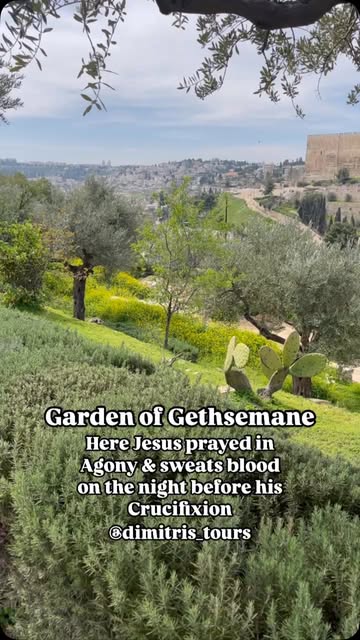Introduction
The Garden of Gethsemane holds a profound place in Christian history and spirituality. Located at the foot of the Mount of Olives in Jerusalem, this sacred garden is renowned as the site where Jesus prayed and faced deep anguish before his arrest. Understanding the Garden of Gethsemane offers valuable insights into biblical narratives, historical context, and spiritual symbolism.
This article explores the garden’s history, biblical significance, archaeological findings, and its role in Christian devotion. Whether you are a student of theology, a pilgrim, or simply curious, this guide provides a comprehensive look at the Garden of Gethsemane through expert perspectives and factual data.
What Is the Garden of Gethsemane?
Historical and Geographical Context
The Garden of Gethsemane is an ancient olive grove situated on the Mount of Olives, east of Jerusalem’s Old City. The name “Gethsemane” translates from Hebrew as “oil press,” indicating its traditional use for pressing olives into oil.
Historically, olive trees have grown in this region for thousands of years, and the garden’s terrain reflects a typical Mediterranean landscape with rocky slopes and scattered olive trees. The garden’s location outside Jerusalem’s walls made it a quiet, secluded spot, ideal for prayer and reflection.
Biblical Significance
The garden is most famous for its mention in the New Testament Gospels, where Jesus spent his last night in prayer before his crucifixion. Here, Jesus experienced profound sorrow and submitted to God’s will, marking a pivotal moment in Christian theology:
- Matthew 26:36-46 describes Jesus’ intense prayer and the disciples’ struggle to stay awake.
- Mark 14:32-42 highlights Jesus’ emotional turmoil.
- Luke 22:39-46 emphasizes the angelic support Jesus received.
This event underscores themes of obedience, sacrifice, and human vulnerability.
Archaeological and Historical Insights
Discoveries and Preservation
Archaeologists have investigated the Garden of Gethsemane area to verify its historical authenticity. While the exact spot of Jesus’ prayer cannot be pinpointed with certainty, several ancient olive trees in the current garden are estimated to be over 900 years old, possibly descendants of trees from Jesus’ time.
The garden has been preserved and maintained by various Christian denominations, and several churches, such as the Church of All Nations, stand adjacent to it. These structures commemorate the garden’s spiritual importance and provide places for worship and pilgrimage.
Olive Trees and Symbolism
The olive trees symbolize peace, endurance, and divine blessing. Their twisted, ancient trunks visually connect visitors to the deep roots of biblical history. The garden’s enduring olive trees contribute to its atmosphere of contemplation and reverence.
Spiritual and Devotional Importance
A Place for Reflection and Prayer
For many Christians worldwide, the Garden of Gethsemane is a powerful symbol of surrender and divine trust. It invites believers to reflect on Jesus’ example of courage in the face of suffering.
Visiting the garden often inspires:
- Personal prayer and meditation
- Spiritual renewal and commitment
- Understanding of human vulnerability and divine grace
Pilgrimage and Rituals
Pilgrims visit the Garden of Gethsemane to walk through the olive groves, pray at the designated spots, and participate in liturgies. It is common to find guided tours that provide scriptural readings and historical context to enrich the spiritual experience.
Practical Tips for Visitors
If you plan to visit the Garden of Gethsemane, consider these actionable insights:
- Visit early in the morning to avoid crowds and experience quiet reflection.
- Wear comfortable shoes as the terrain is uneven and rocky.
- Respect the sacred atmosphere by maintaining silence and reverence.
- Join a guided tour to gain deeper understanding through expert explanations.
- Bring a journal to record personal reflections inspired by the site.
Conclusion
The Garden of Gethsemane stands as a testament to faith, history, and human emotion. Its blend of ancient olive trees, biblical significance, and spiritual depth continues to inspire millions worldwide. Understanding its historical background and spiritual symbolism enriches both academic knowledge and personal faith.
Whether approached as a historical site or a sacred space, the Garden of Gethsemane offers timeless lessons on courage, prayer, and surrender. It beckons visitors and believers alike to pause, reflect, and connect with a pivotal moment in Christian history.
